This post may contain references or links to products from one or more partners of our parent company and/or subsidiaries of our parent company. For more information, visit this page.
June 26, 2020
Can you bleach wooden floors? You betcha!
We know, you might be surprised to hear that most types of wood flooring can be bleached. It’s an easy method to correct water stains and discoloration—common issues for even the most durable wood flooring. But unless you’re rocking some type of super water-resistant wood flooring, spills and stains are gonna happen.
Maybe your existing wood floor is stained from years of child and pet accidents. Maybe you can still see the mark from when your cousin’s ex-wife spilled red wine all over everything (we still haven’t forgiven her).
Or maybe you finally moved a couch, only to find that your sunroom flooring has faded from UV exposure—leaving you with a patchy, mismatched floor.
Stuff happens! At the end of the day, bleaching wood floors can be a great way to freshen up your home and make your flooring look new again. Buying hardwood flooring is an investment—bleaching can save you some serious cash.
Below, we’ll answer all of your questions about bleaching wooden floors—from the basic “can I bleach wooden floors?” and “is bleaching wooden floors safe?” to step-by-step instructions on the process of itself. Let’s dive in!
First of All: Can You Use Bleach on Hardwood Floors?
The simple answer: yes.
That being said, anything you do with bleach or harsh chemicals requires special care. One of the advantages of hardwood is that it’s among the most durable options—but that doesn’t mean you don’t need to be careful how you treat it.
Some types of wood flooring, like white oak, aren’t well suited for bleaching and often discolor. Exotic woods, like mahogany and Brazilian cherry, are prized for their natural color and don’t take bleach well. But if you’ve ever looked into the wood flooring cost of exotics species, you probably wouldn’t even think of touching them with bleach in the first place.
However, woods like red oak, ash, gum, and beech take bleach excellently—so don’t be afraid to go for it!
Is it Safe to Bleach Wooden Floors?
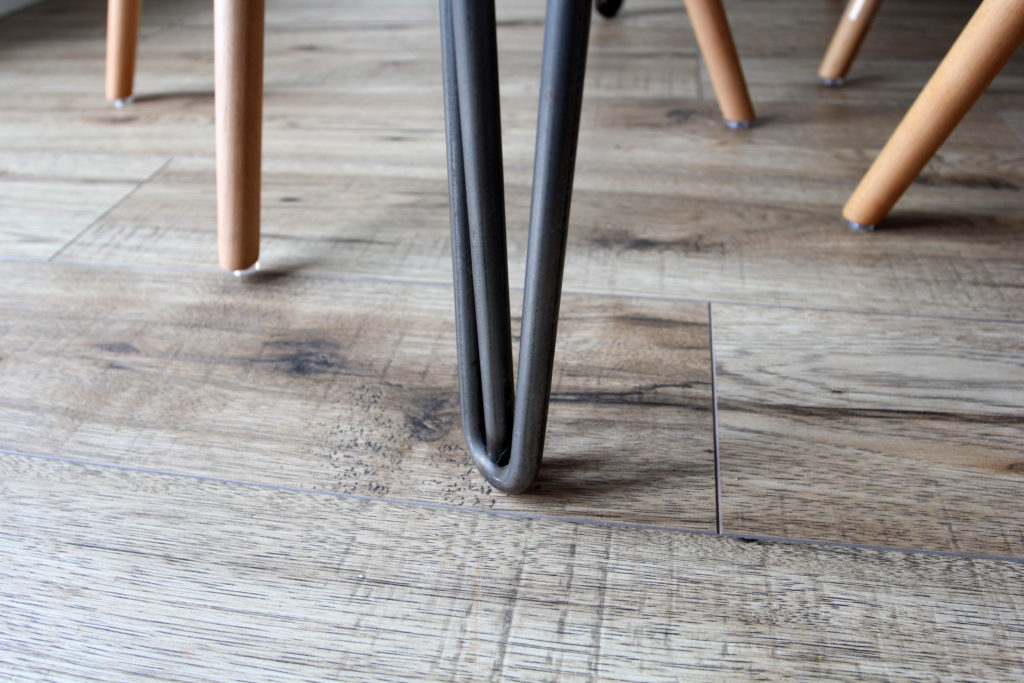
Yep! As long as you avoid the wood species we mentioned earlier, you should be just fine. Of course, we would always recommend consulting with a flooring retailer in your area just to be sure. Better safe than sorry!
A caveat: don’t assume that this advice is also true fake wood flooring. Almost all hardwood floor alternatives react differently, and you can completely destroy the finish on many different types of flooring by using bleach on them.
Laminate, for example, is often mistaken for a type of wood flooring—especially if it’s already installed. But the differences between a laminate vs. hardwood floor are massive!
What is laminate flooring? It’s a composite material with a plastic top layer. It’s not real wood at all! And depending on the product, that top layer can get completely wrecked with bleach. So please, for the love of floors everywhere, be careful and do your research.
Best Brands of 2024
Bleaching Solid Wood vs. Bleaching Engineered Wood
These days, engineered wood has never been more popular—and it’s easy to understand why. The cost to install engineered hardwood floors can be way lower than the cost to install solid wood floors (especially with exotic species).
Engineered hardwood can often be purchased as click-together flooring, meaning installation is faster and easier (especially on do-it-yourself flooring projects). And of course, almost all of the best hardwood floor brands offer engineered products.
But the question remains: can you use bleach on engineered wood floors? And the answer is: in yes… in general.
Look, it all depends on the specific product you have. Given that engineered hardwood floors are covered with a veneer of solid wood, you absolutely can bleach them.
But: you have to make sure that your veneer layer is thick enough to be sanded down (as this is part of the bleaching process). The best engineered hardwood flooring boasts a thick veneer layer—usually 2-3mm—that will allow it to be refinished multiple times. If your veneer is thinner than that, you might not want to risk sanding it.

How to Bleach Wooden Floors: The Step-by-Step Guide
And now, the main event: our step-by-step guide to bleaching wooden floors.
Step 1: Choose the right bleach!
First, you need to decide what type of bleach is best for your wood flooring type. There are different bleach products you can use, depending on what you hope to accomplish. Let’s go through them one by one.
Household bleach is perfect for ink, blood, beverage or other stains
Using chlorine bleach on your floors is kind of like using it on your clothes… you have to know what you’re doing. Doing it right will help you remove unwanted stains and doing it wrong will cause unwanted stains. No bueno. You’re in luck, however, because we are going to talk about how to do it right—but more on that in a minute.
Oxalic acid is a gentle disinfectant for your hardwood floors
Want to give your wood floors a really good deep-clean? You could bleach your wood floors with oxalic acid. Oxalic acid is a great choice if you’re looking to safely disinfect your wood floors and can even help remove dark stains from water or rust.
Two-part bleach kits are for the toughest, most stubborn wood floor stains
Two-part bleach kits generally contain hydrogen peroxide and sodium hydroxide—and they’re the best choice for those hard-to-fix areas. These kits are not intended for casual application and should be used only for the most difficult stains.
Step 2: Prep your floor
Using a sander or a chemical stripping agent, carefully prepare the area for bleaching. This will remove the existing finish, allowing the bleach to penetrate into the stain. We would nearly always recommend sanding rather than using a chemical stripping agent, since chemical strippers are very toxic and require special handling.
Not to mention that while you’re sanding, you may even find that you can remove much of your stain—reducing the amount of bleach you’ll need.
Step 3: Use a stiff brush to treat the stain
Apply the bleaching agent to the stain, using a brush with stiff bristles. Remember, even though wood flooring types may vary, they should all be treated with care. Apply even pressure as you work the bleach into the stain with the brush.
After thoroughly brushing the bleach into the stain, leave it on for ten minutes. After ten minutes, evaluate the stain and reapply more bleach if necessary.
Step 4: Neutralize the bleach and clean up
If you’re using oxalic acid or chlorine bleach, apply white vinegar to the stain to neutralize the bleach before wiping up all the water. Two-part bleaching kits usually contain their own neutralizing agent.
Remember: you should always apply liquids to your hardwood floors very sparingly, as oversaturation of the wood can cause it to swell or discolor. Carefully wipe up any leftover wetness off the floor and let it dry for at least 24 hours before you reapply your finish.
Remember, the best hardwood floor is often the one you already have. The last thing you want to do is turn a stain into a flooring emergency via an overzealous application of bleach. After all, there’s nothing worse than googling “bleach wooden floors” one day… and then having to google “how to replace flooring” or “how to install hardwood floors” the next.
Step 5: Reapply a finish
This might be easier said than done, depending on the type of finish you have. But remember: without a finish of some kind, you’re not going to achieve anything remotely close to scratch-resistant flooring. And if you have a pet… well, let’s just say that an unfinished wood floor is not the best wood flooring for dogs.
And that, friend, will put you right back to square one, sanding out the gouges in your newly-bleached wooden floor.
What If My Floor Is Too Far Gone for Bleaching?
If, after reading this, you realize your surfaces are too far gone for bleaching… well, there are definitely some alternatives. After all, there’s no point in learning to bleach wooden floors if they’re not worth the hassle.
One alternative is to have full refinish done by a professional. You’d be shocked how easily this can breathe new life into your old floor. If refinishing is too much of a commitment (it can get messy) you can always just cover any stains on your floor with peel-and-stick carpet tiles. Seriously, learning how to install carpet tiles takes all of 10 seconds, and boom—you’ve got yourself a carpet.
The obvious alternative to bleaching a wooden floor: just get a new one
These days, there are tons of amazing floors that look just like wood, but are about a thousand times tougher. Installing any one of these will save you the hassle of needing to bleach wooden floors ever again.
Concrete flooring that looks like wood, for instance, is nearly indestructible—and surprisingly easy to install if you have a concrete subfloor (if you’re wondering “what is subflooring”, read on). Plus, you can easily texture it with intricate wood floor designs like herringbone parquet.
Likewise, today’s best types of vinyl flooring are almost indistinguishable from wood when installed. And since they’re made of plastic, they can last a lifetime. Seriously, you can even use this stuff as mudroom flooring or as an outdoor flooring option.
There are even types of tile that mimic the look of hardwood ridiculously well. And now that snap-together tile flooring is a thing, installing wood-look porcelain tile is no harder than installing laminate. Debating the pros and cons of tile vs. laminate? Now you can get the best of both worlds without having to worry about any of the disadvantages of floating floors.
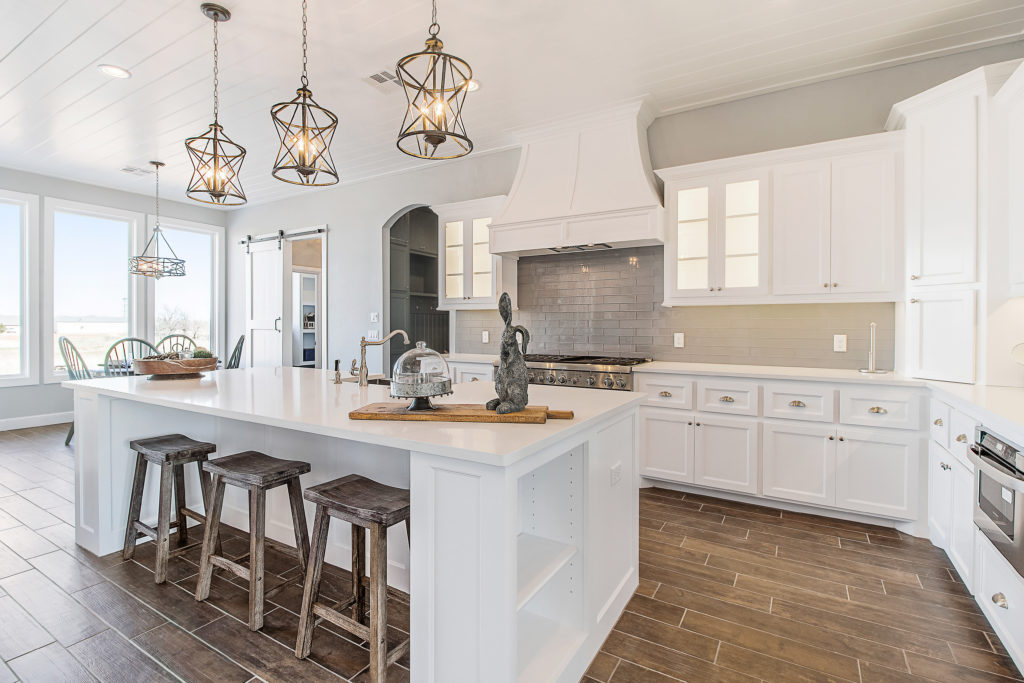
Conclusion
Look, we could stay here all day talking about the merits of carpet vs. laminate or the best bamboo flooring or even bamboo flooring vs. laminate. But we know that’s not why you came! You want to know how to bleach wooden floors.
Well, friend, we hope we’ve shown you—and given you a lot of extra info to boot. But if you decide you don’t want to go through the hassle of bleaching your hardwood, take it from us: the best way to get a new floor is to buy it from a reputable flooring store in your area. Just click that link to search for one near you! And for more info on all things flooring, be sure to check out:
- The Pros and Cons of Cork Flooring
- A Comparison of Tile vs. Wood Floors for Your Home
- Is the Cork Flooring Lowes Sells Actually Worth Buying?
- Heating Wood Floors 101: Everything You Need to Know
- Linoleum vs. Laminate vs. Vinyl: Differences, Pros, & Cons
- How Much Does it Cost to Replace Carpet With Hardwood?
- Engineered Bamboo Flooring: Pros and Cons
- The Best Cork Flooring Options & 11 Reasons They’re Awesome
- 9 Reasons The “Carpet vs. Hardwood” Debate is Silly
About The Author

Dr. Sara Austin
June 26, 2020
Best known for being “not that kind of doctor” and never knowing which fork to use, Sara is a learning designer and writer, former real estate agent, and builder with a penchant for home design and remodeling.
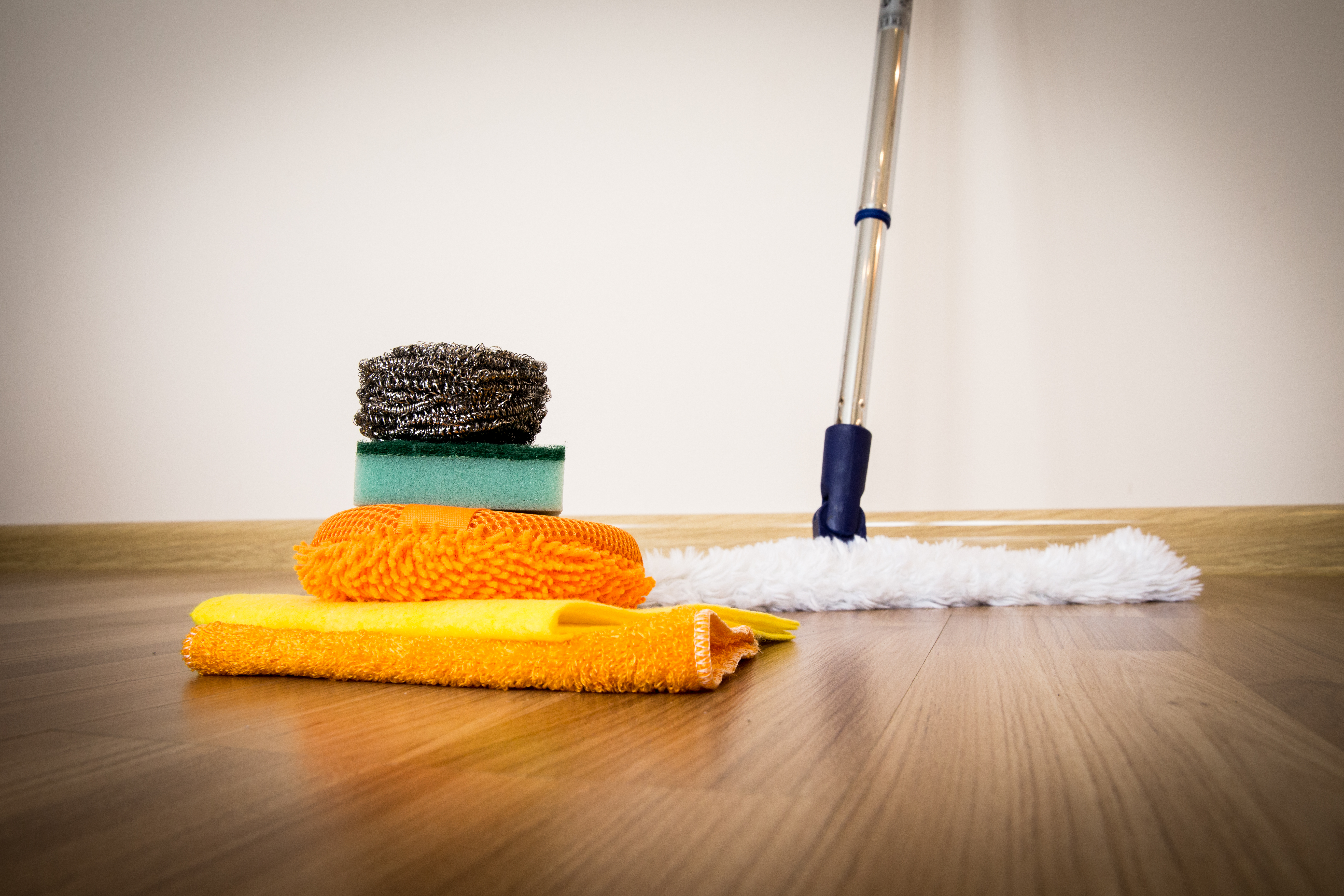
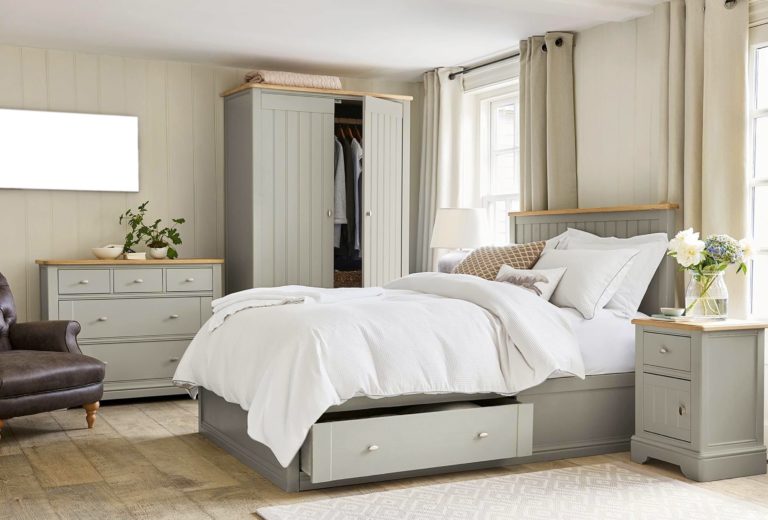

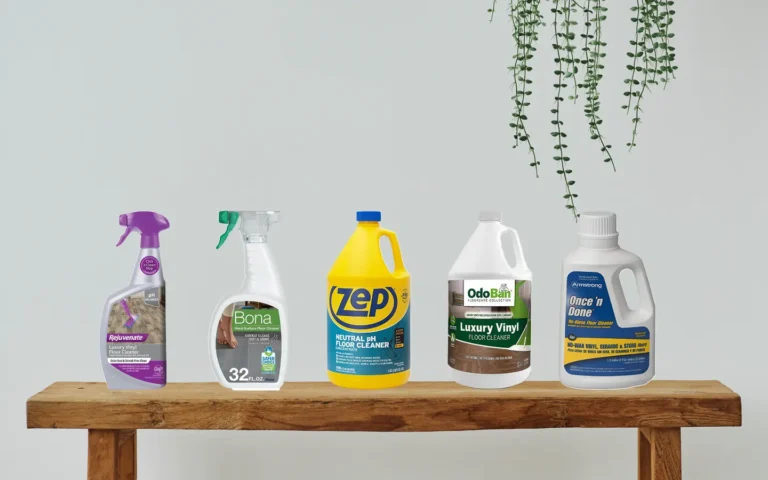
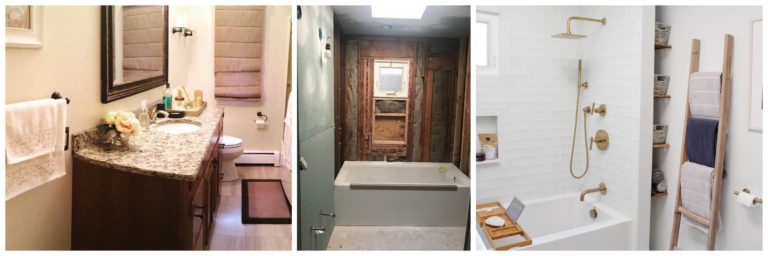
1 comment
Deborah Hill
We have an engineered wood floor that has scratches, dents and heel marks, we could renovate it but its cherry wood, what do you suggest we put on it if bleaching is not suitable? We would like to improve the colour to a weathered oak/ natural oak shade but how is this done with a naturally red wood?